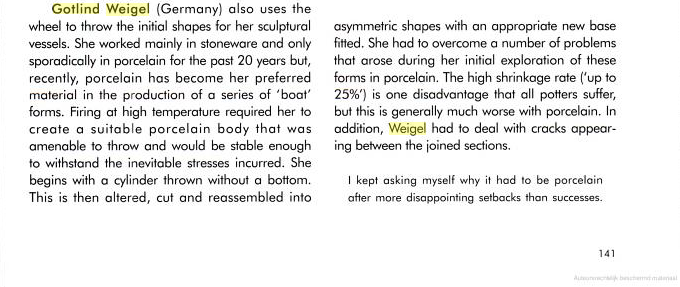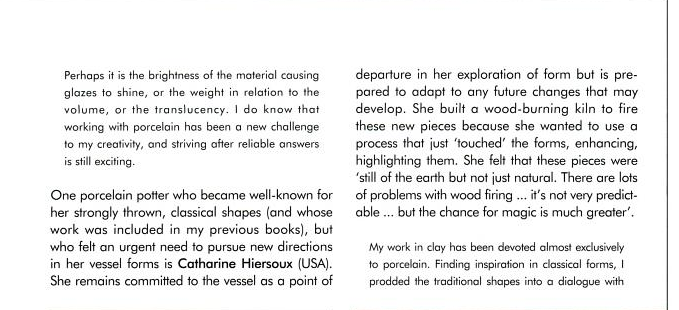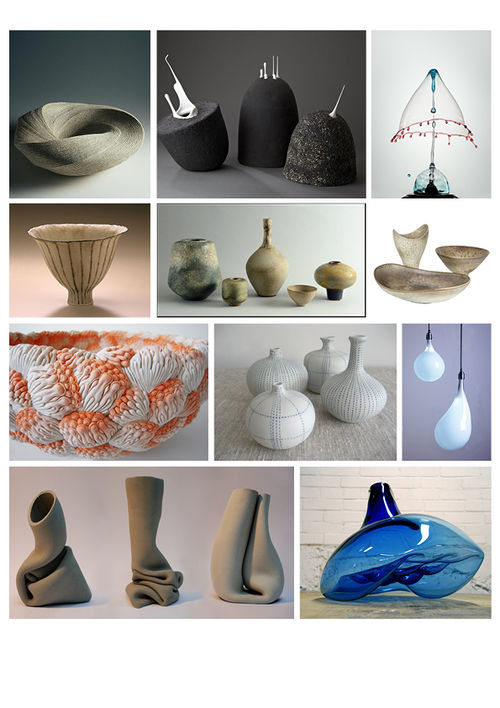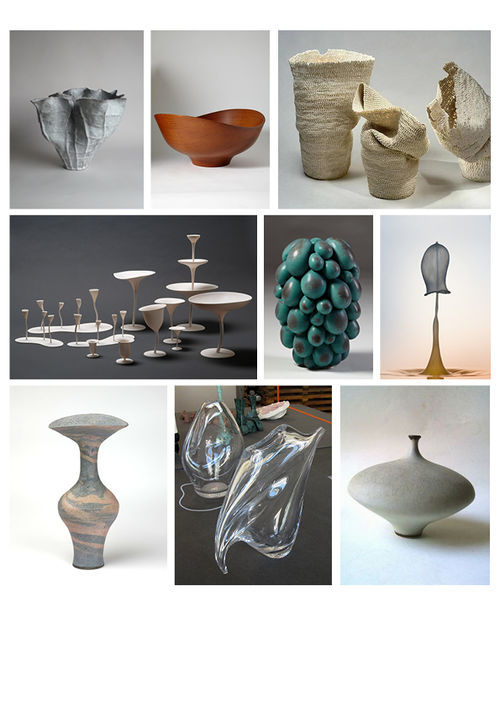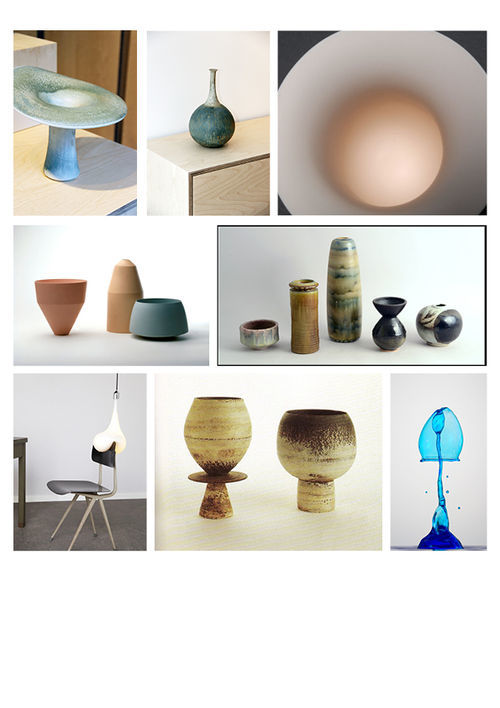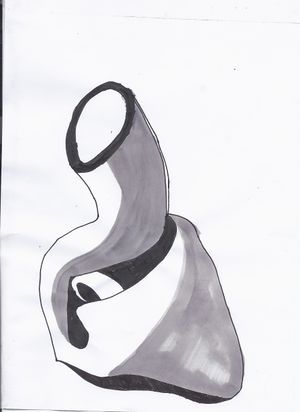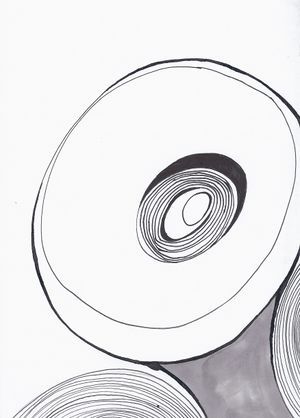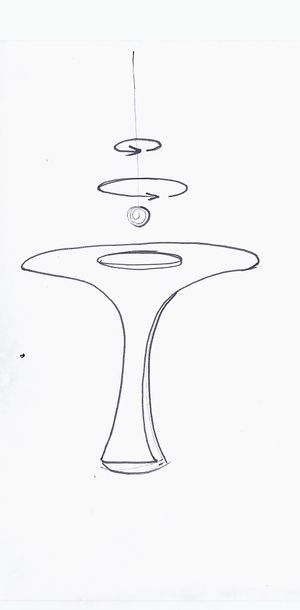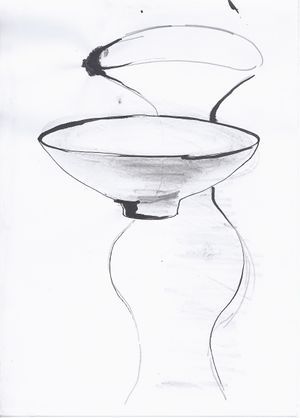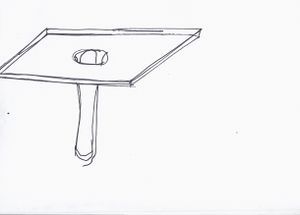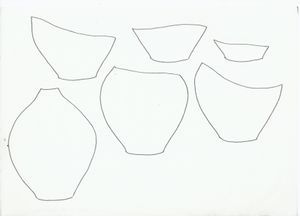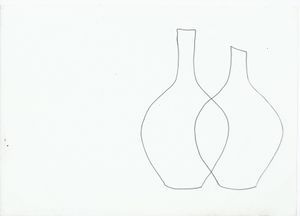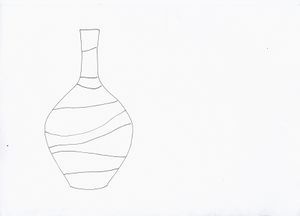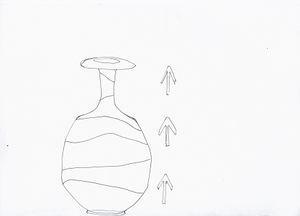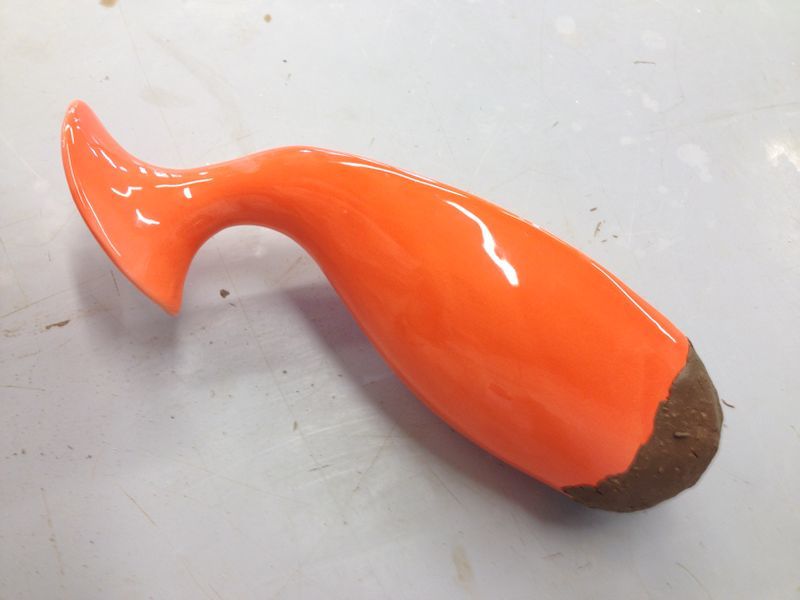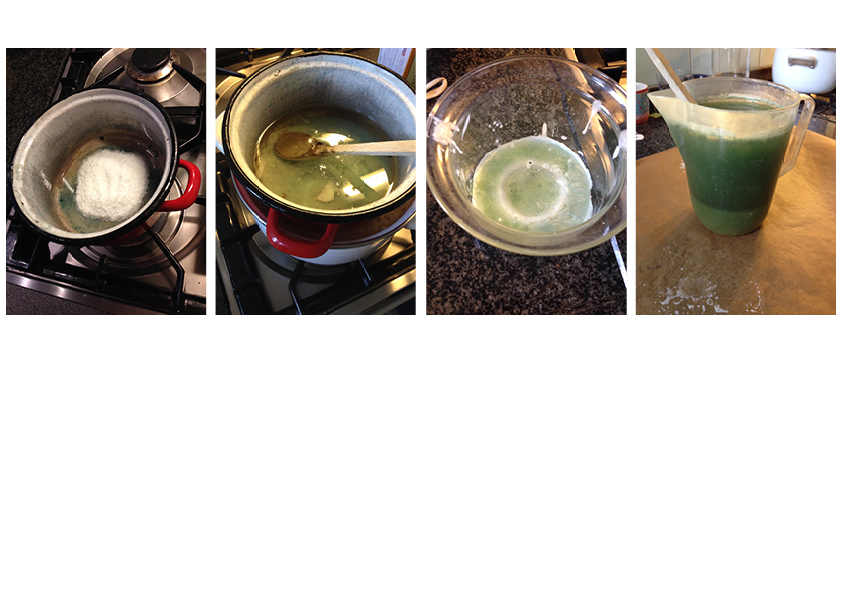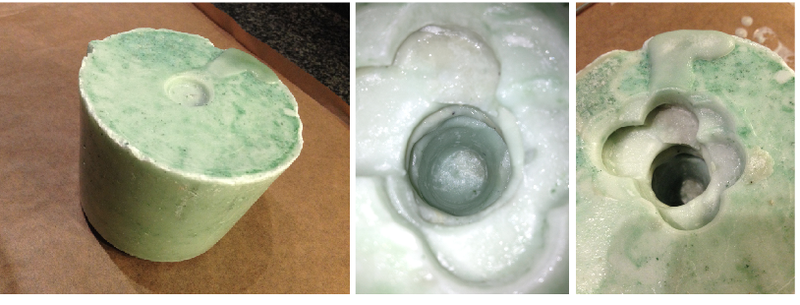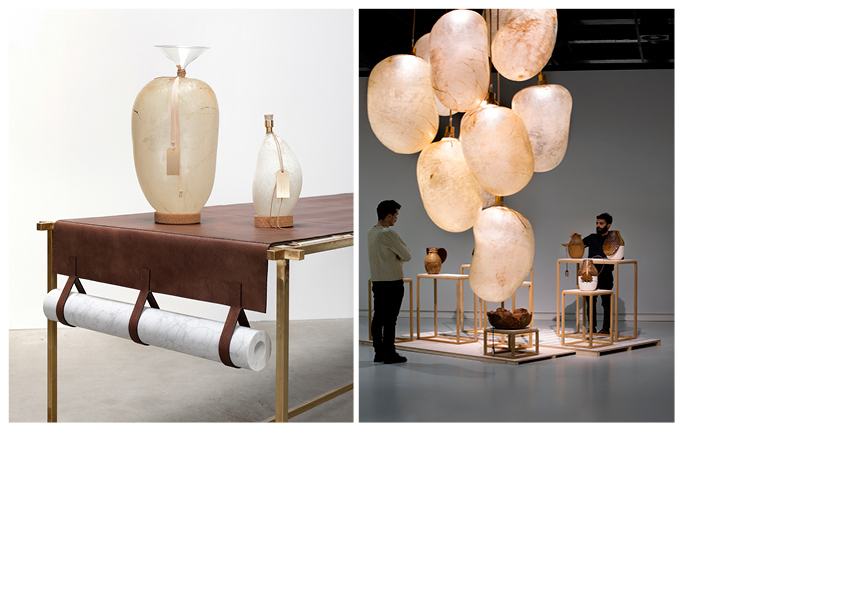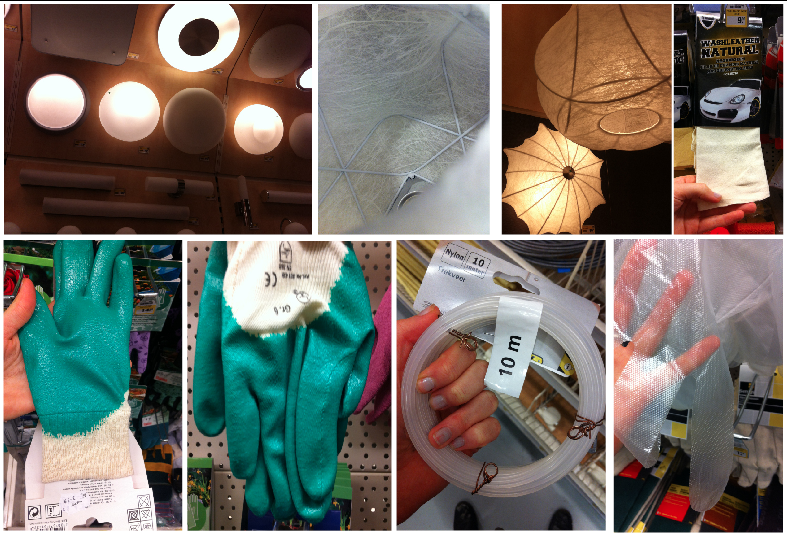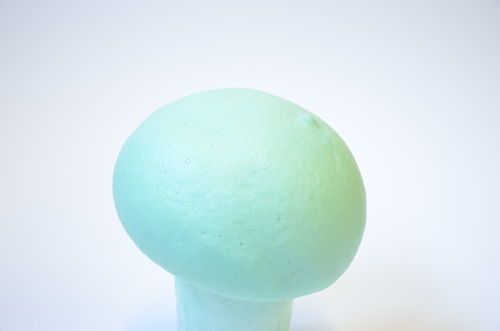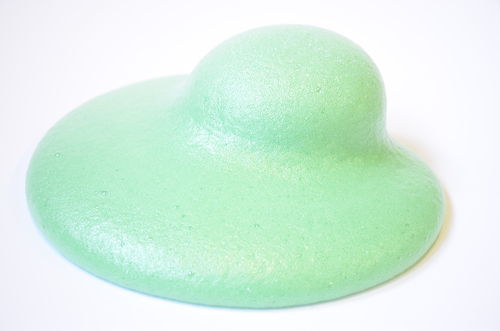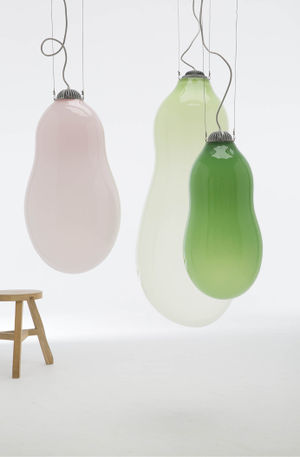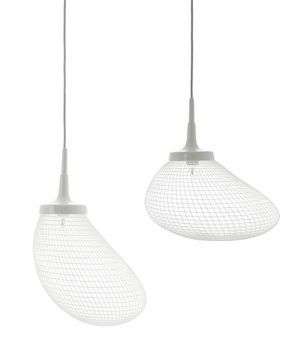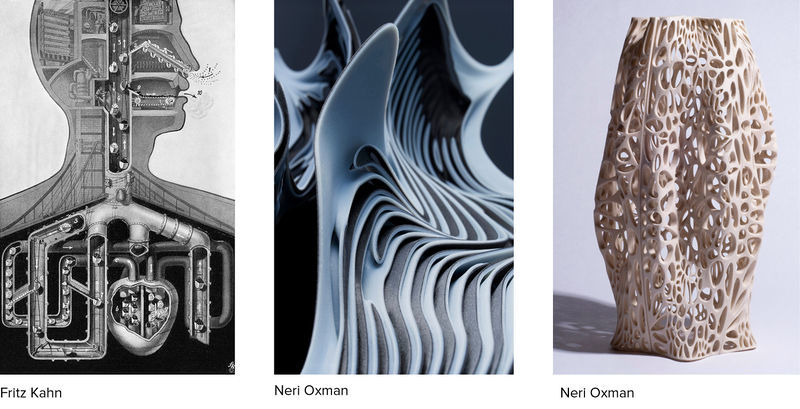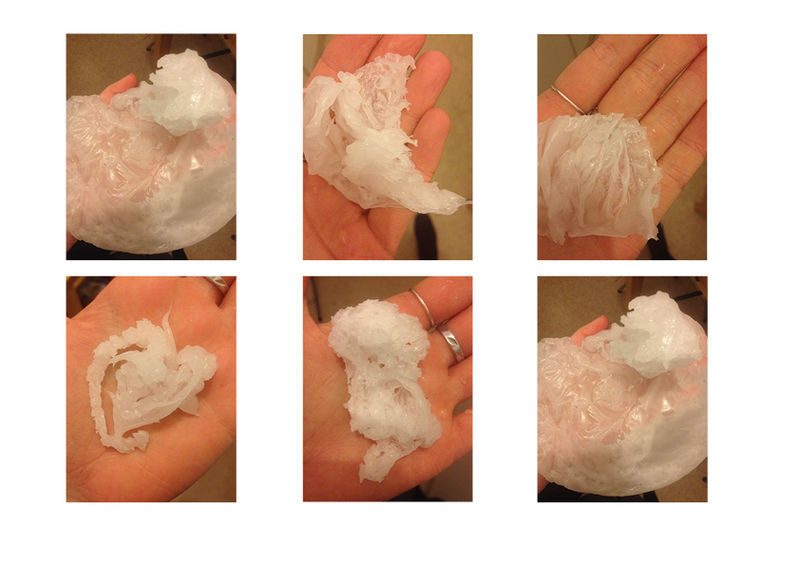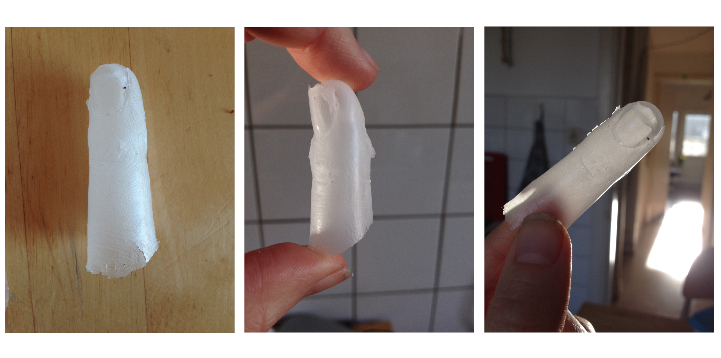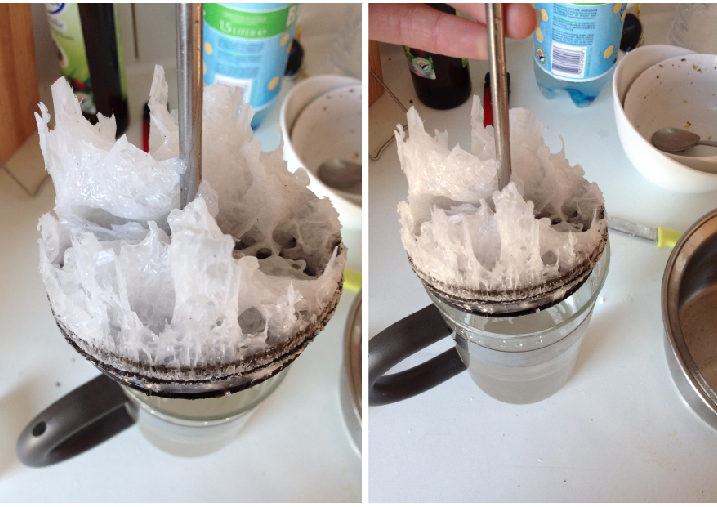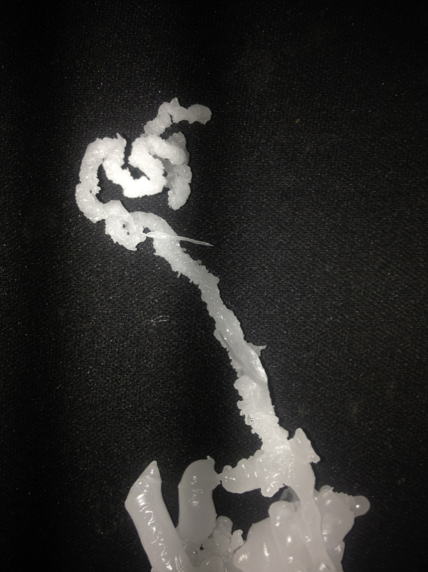Difference between revisions of "User:Ninavdbroek/Gotlind Weigel"
Ninavdbroek (talk | contribs) |
Ninavdbroek (talk | contribs) |
||
| (14 intermediate revisions by the same user not shown) | |||
| Line 1: | Line 1: | ||
| + | |||
== '''Gotlind Weigel''' == | == '''Gotlind Weigel''' == | ||
| + | [[File:Collage.png| 800px]] | ||
Vase, bottle Boijmans Museum. | Vase, bottle Boijmans Museum. | ||
| Line 116: | Line 118: | ||
== Class/ Lesson 3 == | == Class/ Lesson 3 == | ||
| − | |||
| − | |||
| − | What are the tools and media of your craft? | + | ESTHETICS OF TECHNOLOGY |
| − | What are the borders of this practice? (what new media technologies have arisen / what is its future) | + | |
| − | Connect to a historical discourse and/or give concrete examples of contemporary practitioners | + | '''What is your craft? (define your discipline, method or approach)''' |
| − | Define your position of your practice in relation to newer technologies. | + | |
| + | '' "As an maker I'm exploring the way nature is developing/ proceeding and being as efficient as possible and use this as tool, study and inspiration for my own work." "Biomimicry." | ||
| + | |||
| + | '' I'm using my stylistic background in creating concepts that contribute to a better environment in general. Using nature and (life) sciences as inspiring model to solve 'problems' and over think our/ redesign conventional ways of dealing with products. Pushing society towards a more sustainable lifestyle. This can express itself in branding, architecture, new materials and so on.'' | ||
| + | |||
| + | '''What are the tools and media of your craft?''' | ||
| + | |||
| + | ''I think the value and the simplicity of a material (or his shape) itself is the base for the concept, combined with a broad scientific research about it's properties. The outcome of my craft can express itself in a physical product as in a poster/ editorial/ video. Always attempt to bring a message towards people that provoke them to take a critical position. Questioning themselves where their personal decisions are based on. For example my latest project- '' | ||
| + | |||
| + | ''Ivorish is the result of substantive and artistic research dedicated to the ambiguous beauty of ivory. The intended jewelry line is made of milk teeth. By pulverizing the material into powder and then manually shaping an object out of it, I created a versatile new kind of ivory without any restrictions. | ||
| + | With Ivorish, I also wants contribute to the discussion about ivory. The public can donate milk teeth. From these teeth, a ring will be produced that evokes a visual association with the tusks of elephants. If the ring is worn by enough people, it becomes a piece of jewelry with a symbolic function'' – '''sustainable ivory is not only a possibility, it is a choice.''' | ||
| + | |||
| + | '''What are the borders of this practice? (what new media technologies have arisen / what is its future)''' | ||
| + | |||
| + | ''I think our challenge is to move our attitude upon nature from controlling it towards adapting and cooperate with it. | ||
| + | We have a cliche image of technology which is very mechanical and without esthetics. This idea is off course generated during the industrial revolution. But actually technology have always been mimicking nature. Like the computer looks at how the brain work or a camera uses the human eye as example. | ||
| + | Fritz Kahn illustrates this very well. '' | ||
| + | ''But how can technology look more natural, meaning, soft, sensual, human and so on. | ||
| + | Nature and technology have always been intertwined though but the difference is that machine are made for reproducing; which is very precise and controlled work while I'm more interested in the organic uncontrollable. Comparing this relationship and blurring the edges is what drives me.'' | ||
| + | |||
| + | |||
| + | '''Connect to a historical discourse and/or give concrete examples of contemporary practitioners''' | ||
| + | |||
| + | '''Define your position of your practice in relation to newer technologies.''' | ||
| + | |||
| + | |||
| + | |||
| + | |||
| + | Algorithmes | ||
| + | Synthetic biology, which looks at adapting natural organisms and processes to create new products, materials and even lifeforms. | ||
| + | The concept of 'biotech' or 'biotechnology' encompasses a wide range of procedures (and history) for modifying living organisms according to human purposes going back to domestication of animals, cultivation of plants, and "improvements" to these through breeding programs that employ artificial selection and hybridization. Modern usage also includes genetic engineering as well as cell and tissue culture technologies. | ||
| + | |||
| + | een nieuwe benadering van genesis engineering, we designen biologie al meer dan 10000 jaar, net als je huisdier, dmv beslissingen hebben we het een kant op geduwd zoals wij dat wilde . we kunnen veel meer controle krijgen en kunnen gaan mixen tussen leven/ groepen | ||
| + | |||
| + | An new approach to genesis engineering, we already designing biology | ||
| + | |||
| + | I believe we are on the cusp of a material revolution led by emerging living technologies, and that science is becoming the future designer’s toolbox." | ||
| + | |||
| + | |||
| + | == Experiments == | ||
| + | |||
| + | |||
| + | Movie | ||
| + | Memory Foam | ||
| + | |||
| + | [[/Latex 'long' | Latex 'lung']] | ||
| + | |||
| + | [[/Candle Wax | Candle Wax]] | ||
| + | |||
| + | [[/Materials | Materials and examples]] | ||
| + | |||
| + | |||
| + | [[File:Scan.jpeg | 300px]] | ||
| + | [[File:Scan_5.jpeg | 300px]] | ||
| + | |||
| + | |||
| + | [[File:Scan_2.jpeg | 300px]] | ||
| + | [[File:Scan_3.jpeg | 300px]] | ||
| + | |||
| + | [[File:Scan_4.jpeg | 300px]] | ||
| + | [[File:Scan_1.jpeg | 300px]] | ||
| + | [[File:Scan_7.jpeg | 300px]] | ||
| + | [[File:Scan_8.jpeg | 300px]] | ||
| + | [[File:Scan_9.jpeg | 300px]] | ||
| + | [[File:Scan_10.jpeg | 300px]] | ||
| + | |||
| + | |||
| + | [[File:Long2.JPG | 800px]] | ||
| + | [[File:Long1.png | 800px]] | ||
| + | |||
| + | |||
| + | LATEX 'LUNG' | ||
| + | |||
| + | I searched around for a special form that would suit my 'breathing' idea. | ||
| + | Because Gotlind Weigel had to deal with the fact that porcelain shrinks during the process (+/- 25%) and because she sees the sculpture as a human body ('Clay in it's raw state is boneless but we witness how clay takes on body) I came up with the idea of bringing the collection 'alive'. Is it possible to let objects breath and simulate the natural process of a human lung? Take Jellyfishes as inspiring model. Using timelapse or video as medium to register this phenomenon. Experiment with other mateirals that have the same properties. The flexibility and power to 'grow'. | ||
| + | |||
| + | ANALOG <> DIGITAL | ||
| + | |||
| + | ALIVE <> NON ALIVE | ||
| + | |||
| + | |||
| + | |||
| + | |||
| + | FIRST EXPERIMENTS WITH CANDLE WAX | ||
| + | |||
| + | [[File:Wax.jpg | 1000px]] | ||
| + | |||
| + | |||
| + | Candle wax is a tough material to work with. Although it's surprisingly strong you never can predict how it will act. But that's exactly what I want. | ||
| + | You have to deal with the same property as ceramic; shrinking. As candle wax dries it will change size. | ||
| + | |||
| + | [[File:Candle1.png | 800px]] | ||
| + | |||
| + | [[File:Candle2.png | 800px]] | ||
| + | |||
| + | [https://www.youtube.com/watch?v=Qf2IsfaYkzs&feature=youtu.be | "Experiment on video; Melting candle wax by using a heaten metal construction."] | ||
| + | |||
| + | [https://www.youtube.com/watch?v=6w7d4TkaE28&feature=youtu.be | "Experiment on video; Pour the melted candle wax in a glazen mould. Creating different layers of colors."] | ||
| + | |||
| + | I built the vase on different layers of wax. Each with a slightly other tone of green color. I wanted to create a overflow like the Gotlind vases are so well known of. The result is visible in the inner profile of the object. This appeared when the vase broke during removing the glass. The 'neck' was not strong enough so in ended up in 4 different pieces. | ||
| + | [[File:Candle5.png | 800px]] | ||
| + | |||
| + | Now I'm trying multiple ways to bring the pieces back together. Tried with resin, glue, heat and waxing. Maybe tomorrow I'll have a better shot.. | ||
| + | |||
| + | |||
| + | |||
| + | |||
| + | |||
| + | [[File:Forma.jpg | 1000px]] | ||
| + | |||
| + | BLADDER- USING COW OR PORK BLADDER FOR THE LUNG 'STIMULATION'. NATURAL MATERIAL THAT'S WATERPROOF AND VERY STRONG. (LIKE FORMAFANTASMA USES HERE IN THE IMAGE) | ||
| + | |||
| + | SIWA PAPER- BROWN PAPIER, ENABLE TO CRUMBLE, WATERPROOF AS WEL. | ||
| + | |||
| + | THIN LEATHER- FOR EXAMPLE LEATHER THEY USE FOR DRUMS. SEMI SEE TROUGH. | ||
| + | |||
| + | THERMOPLASTIC- RECYCLED PLASTID WITH HIGH FLEXIBILITY. | ||
| + | |||
| + | DRY ICE- EXPERIEMNT WITH DRY ICE AND SOAP TO CREATE BUBBLES. | ||
| + | |||
| + | MEMORY FOAM- LIKE THEY USE IN MATTRESSES. CHANGEABLE IN FORM BUT ALWAYS REMEMBERING IT'S ORIGINAL SHAPE. | ||
| + | |||
| + | [[File:Materials.png | 1000px]] | ||
| + | |||
| + | |||
| + | |||
| + | |||
| + | |||
| + | |||
| + | |||
| + | |||
| + | |||
| + | [[File:DSC_6501.JPG | 500px]] | ||
| + | [[File:DSC_6505.JPG | 500px]] | ||
| + | [[File:Alex.jpg | 300px]] | ||
| + | [[File:WoW_AdeWitte_01_900.jpg | 300px]] | ||
| + | |||
| + | [[File:Fritz.jpg | 800px]] | ||
| + | |||
| + | |||
| + | |||
| + | |||
| + | [https://plus.google.com/116100318381395613671/posts/WBUnnW2qoqD | '''VIDEO PRESENTATION'''] | ||
| + | |||
| + | |||
| + | [[File:a.png | 800px]] | ||
| + | |||
| + | [[File:b.png | 800px]] | ||
| + | |||
| + | [[File:c.png | 800px]] | ||
| + | |||
| + | [[File:d.png | 800px]] | ||
| + | |||
| + | [[File:e.png | 800px]] | ||
| + | |||
| + | [[File:f.png | 800px]] | ||
| + | |||
| + | [[File:g.png | 800px]] | ||
| + | |||
| + | [[File:h.png | 800px]] | ||
| + | |||
| + | |||
| + | |||
| + | |||
| + | |||
| + | |||
| + | |||
| + | |||
| + | [[File:Test1.jpg | 800px]] | ||
| + | |||
| + | [[File:Test2.png | 800px]] | ||
| + | [[File:Test4Nina.png | 800px]] | ||
| + | [[File:Test5Nina.png | 800px]] | ||
| + | [[File:Test6Nina.png | 800px]] | ||
Latest revision as of 13:27, 17 November 2014
Contents
Gotlind Weigel
Vase, bottle Boijmans Museum. 1975 Stoneware, Glaze
Duo Gotlind Weigel (f) and Gerald Weigel (m) +/- 1975 Gotlind was vorn in Georgenburg 1932. 1949- 1956 apprenticeship and years of travel. Joined the London Gruppe/ together with Kuhn, Scheid and Schott. 1973 Studio Gabsheim with husband Gerald Weigel.
Made collection together and separate out of stoneware, glaze, porcelain vessel. Glaze has rough surface./ Combining these materials. Collection was affected by | Bauhaus but instead of straight lines they used curves. An other prominent thins where the three corners More to come.... Intense colorfulness and wheel throwing techniques. The shapes were inspired by nature, rock faces, lava shapes and in the end: shape of wings
Gotlind Weigel1932 Hadergasse 7D 55288 Gabsheim Tel +49 6732 3919weigel-keramik@gmx.de My early youth and my later training as a potter were very much affected by the Bauhaus, but in contrast to its straight line-the curving line is the main idea of my work. The central subject of my work for about half a century has been the wheel-thrown vessel leading from tableware to unique copies, from stoneware to porcelain. At present I am trying to combine both materials in variants of "Doppelform" - Dubbele vorm.
Gerald Weigel1925 Hadergasse 7D 55288 Gabsheim Tel +49 6732 3919weigel-keramik@gmx.de Nature is the inspiration for my work stones, rock faces and lava shapes. In the1960s ones of the kind were rarely found in my work. Primarily it was the shape of wings which came into existence and which later, in the 1980s, were taken over from the shape of stones. Additionally, the wings appear, too, which have been significant of my work all the time. The glazes disappeared and the surfaces became rough. My recent works show again stones and have high shapes and three corner forms of intense colourfulness.
All forms of art have their own language and ceremic art, a visual and tactile art form, is no exception. The objects speak for themselves and the creative ideas behind the work communicate themselves to the viewer. Knowledge and understanding, however, can be acquired and the enjoyment of this art form is increased by the experience of collecting and handling ceramics.
'A network of multiple openings and protrusions that seem the result of interiorised pressures referenced both psychic and psychical bodily functions. These heads have found a way to speak the body without representing it directly. Clay in it's raw state, is boneless but we witness how clay takes on body, and how that body subsequently breaks down and decomposes back into clay.' 'Whay she conveys to us about the world and about man is not the exterior view but the inner and deeper sight, not reality's flat surface but it's more essential background. What appeals to her is not the individual but everything that connects individuals to each other, beyond time, space, culture and religion.' - Carmen Dionyse
Personal Interests
I was attracted to the object because of the natural shapes, brought together in a whole collection. The shapes seemed to be formed by coincidence. I associated them with mushrooms and a freezing moment of a particular liquid. They reminded me of the high speed water drop photographs of Heinz Maier.
Nature creates all kind of random patterns, like a group of birds for example; together they create a form by flying a certain direction. Inspired by serie EARTHFLIGHT. (This interest in birds from both sides is by accident) (Jelly fishes) (Bees eyes) Another stoneware collection that creates a overall concept is Lindform. The inspiration for the Swedish company Lindform comes from the Scandinavian nature with it’s organic tones and simple shapes. Emerged from a moment picking stones on a beautiful beach. The collection also contains influences from Japan, whose minimalist style marries well with the Nordic design. The vases are made in cooperation with Lindform in Thailand by a small family business with 40 years of experience. All products are handmade of lead-free porcelain clay. Every piece is unique in itself. All vases together create a wonderful pebble beach but also each vase separately is of a beautiful simplicity, with or without a flower!
- Heinz Maier
- Lindform- Sweden
- Lucie Rie- 1902- 1995 Austria born potter. Father was consultant of Sigmund Freud
- Carl Harry Stalhane- Sweden, Stoneware with matte glaze. 1960.
- Young Mi Kim- Young mi Kim was born and raised in south Korea. Her family immigrated to New York City in 1974.
She grew up surrounded by beautiful mountains in rural S.Korea, engaged in all forms of art. She studied Painting, graduating from Cooper Union in N.Y.C.
- Mårten Mårten Medbo- Crowd. Vase/ Sculpture. Sweden 2014.
- Finn Juhl- Denmark. 1950. Wooden Bowl.
- Pieke Bergmans- Holland. Light bulbs. Objects that look similar to Gotlinds shapes. Liquid freeze. Glass, Light, Textile.
- Andrea Branzi- Louis XXI Collection. Porcelaine humaine. Andrea Branzi designed "Louis XXI, Porcelaine humaine" for the Manufacture de Sèvres. A set of eleven pieces revealing forms that are light and undulating, organic and sensual, in body-tinted soft porcelain. A creation that faithfully reproduces his reflections on nature and hybridization.
| Details Louis XXl collection
Technique
Mottle or mottling is the appearance of uneven spots. It is commonly used to describe plants or the skin of animals. In plants, mottling usually consists of yellowish spots on plants, and is usually a sign of disease or malnutrition. Many plant viruses cause mottling, some examples being..... In geology, mottled refers to a patchy/blotch texture of alteration or interbedding, commonly found in limestone and commonly caused by bioturbation.
Bioturbation is the reworking of soils and sediments by animals or plants.[1] Its effects include changing texture of sediments (diagenetic), bioirrigation and displacement of microorganisms and non-living particles. NL- Bioturbatie is in de bodemkunde, sedimentologie, limnologie en oceanografie het door elkaar werken en verplaatsen van sediment door organismen (zowel planten als dieren).
Biomimetics or biomimicry is the imitation of the models, systems, and elements of nature for the purpose of solving complex human problems
Class/ Lesson 1
Reference Jon Stam/ Chasing the medium/ material for identical copy. Find the relation between historical context and personal association. Designing a tool to create a form/ shape based on randomness. Can you still see the difference between a man made/ nature made / machine made artefact/ object? Growing material/ mushrooms. Making timelap of this process. Make a material list for the identical copy.
Email Jon Stam/' Avant Gardisim, Radical Design Movements, Abstraction to the New Asthehetic, Nature as a New Media / Synthetic Biology, Conditional Design, the essence of the handmade versus the machine made, repetition, serial production, cultural codes, the Microcosm and Macrocosm, crafted aretfacts as scientific metaphors, White Cubing and Black Boxing. Not to forget Laminated Object Manufacturing, 2.5d printing, and virtual/augmented reality.
Assignment interpretation other students/
- Technology
- Time Frame
- Friend
Glass blowing Wood cutting Growing bacteria/ molds Melting plastics Ceramics
Baby toilet Vase Diner dish Hat Chair
Drink-straw Drank table Plants
Class/ Lesson 2
Melting materials- modeling | Candle
Class/ Lesson 3
ESTHETICS OF TECHNOLOGY
What is your craft? (define your discipline, method or approach)
"As an maker I'm exploring the way nature is developing/ proceeding and being as efficient as possible and use this as tool, study and inspiration for my own work." "Biomimicry."
I'm using my stylistic background in creating concepts that contribute to a better environment in general. Using nature and (life) sciences as inspiring model to solve 'problems' and over think our/ redesign conventional ways of dealing with products. Pushing society towards a more sustainable lifestyle. This can express itself in branding, architecture, new materials and so on.
What are the tools and media of your craft?
I think the value and the simplicity of a material (or his shape) itself is the base for the concept, combined with a broad scientific research about it's properties. The outcome of my craft can express itself in a physical product as in a poster/ editorial/ video. Always attempt to bring a message towards people that provoke them to take a critical position. Questioning themselves where their personal decisions are based on. For example my latest project-
Ivorish is the result of substantive and artistic research dedicated to the ambiguous beauty of ivory. The intended jewelry line is made of milk teeth. By pulverizing the material into powder and then manually shaping an object out of it, I created a versatile new kind of ivory without any restrictions. With Ivorish, I also wants contribute to the discussion about ivory. The public can donate milk teeth. From these teeth, a ring will be produced that evokes a visual association with the tusks of elephants. If the ring is worn by enough people, it becomes a piece of jewelry with a symbolic function – sustainable ivory is not only a possibility, it is a choice.
What are the borders of this practice? (what new media technologies have arisen / what is its future)
I think our challenge is to move our attitude upon nature from controlling it towards adapting and cooperate with it. We have a cliche image of technology which is very mechanical and without esthetics. This idea is off course generated during the industrial revolution. But actually technology have always been mimicking nature. Like the computer looks at how the brain work or a camera uses the human eye as example. Fritz Kahn illustrates this very well. But how can technology look more natural, meaning, soft, sensual, human and so on. Nature and technology have always been intertwined though but the difference is that machine are made for reproducing; which is very precise and controlled work while I'm more interested in the organic uncontrollable. Comparing this relationship and blurring the edges is what drives me.
Connect to a historical discourse and/or give concrete examples of contemporary practitioners
Define your position of your practice in relation to newer technologies.
Algorithmes
Synthetic biology, which looks at adapting natural organisms and processes to create new products, materials and even lifeforms.
The concept of 'biotech' or 'biotechnology' encompasses a wide range of procedures (and history) for modifying living organisms according to human purposes going back to domestication of animals, cultivation of plants, and "improvements" to these through breeding programs that employ artificial selection and hybridization. Modern usage also includes genetic engineering as well as cell and tissue culture technologies.
een nieuwe benadering van genesis engineering, we designen biologie al meer dan 10000 jaar, net als je huisdier, dmv beslissingen hebben we het een kant op geduwd zoals wij dat wilde . we kunnen veel meer controle krijgen en kunnen gaan mixen tussen leven/ groepen
An new approach to genesis engineering, we already designing biology
I believe we are on the cusp of a material revolution led by emerging living technologies, and that science is becoming the future designer’s toolbox."
Experiments
Movie Memory Foam
LATEX 'LUNG'
I searched around for a special form that would suit my 'breathing' idea. Because Gotlind Weigel had to deal with the fact that porcelain shrinks during the process (+/- 25%) and because she sees the sculpture as a human body ('Clay in it's raw state is boneless but we witness how clay takes on body) I came up with the idea of bringing the collection 'alive'. Is it possible to let objects breath and simulate the natural process of a human lung? Take Jellyfishes as inspiring model. Using timelapse or video as medium to register this phenomenon. Experiment with other mateirals that have the same properties. The flexibility and power to 'grow'.
ANALOG <> DIGITAL
ALIVE <> NON ALIVE
FIRST EXPERIMENTS WITH CANDLE WAX
Candle wax is a tough material to work with. Although it's surprisingly strong you never can predict how it will act. But that's exactly what I want.
You have to deal with the same property as ceramic; shrinking. As candle wax dries it will change size.
| "Experiment on video; Melting candle wax by using a heaten metal construction."
I built the vase on different layers of wax. Each with a slightly other tone of green color. I wanted to create a overflow like the Gotlind vases are so well known of. The result is visible in the inner profile of the object. This appeared when the vase broke during removing the glass. The 'neck' was not strong enough so in ended up in 4 different pieces.

Now I'm trying multiple ways to bring the pieces back together. Tried with resin, glue, heat and waxing. Maybe tomorrow I'll have a better shot..
BLADDER- USING COW OR PORK BLADDER FOR THE LUNG 'STIMULATION'. NATURAL MATERIAL THAT'S WATERPROOF AND VERY STRONG. (LIKE FORMAFANTASMA USES HERE IN THE IMAGE)
SIWA PAPER- BROWN PAPIER, ENABLE TO CRUMBLE, WATERPROOF AS WEL.
THIN LEATHER- FOR EXAMPLE LEATHER THEY USE FOR DRUMS. SEMI SEE TROUGH.
THERMOPLASTIC- RECYCLED PLASTID WITH HIGH FLEXIBILITY.
DRY ICE- EXPERIEMNT WITH DRY ICE AND SOAP TO CREATE BUBBLES.
MEMORY FOAM- LIKE THEY USE IN MATTRESSES. CHANGEABLE IN FORM BUT ALWAYS REMEMBERING IT'S ORIGINAL SHAPE.

